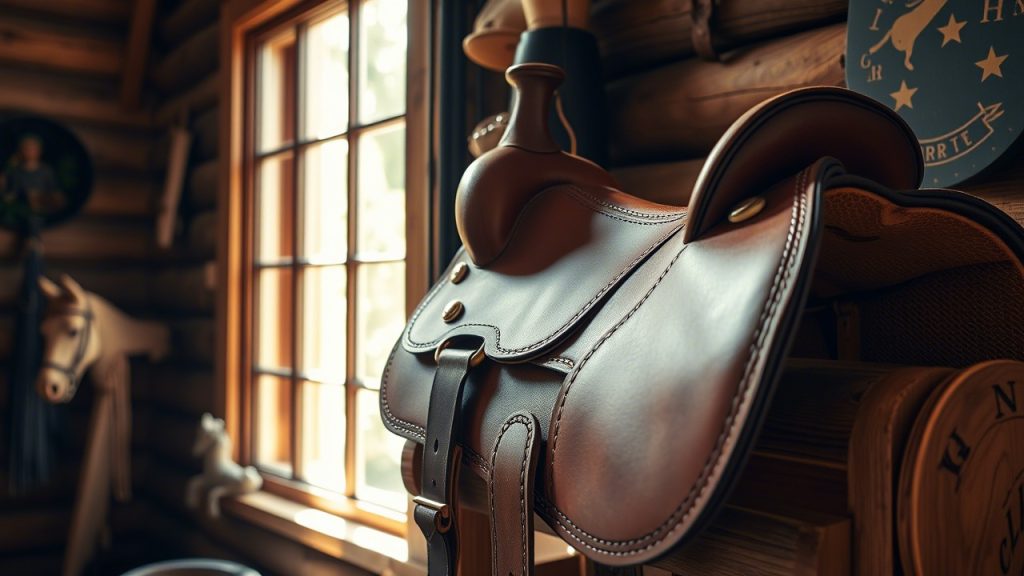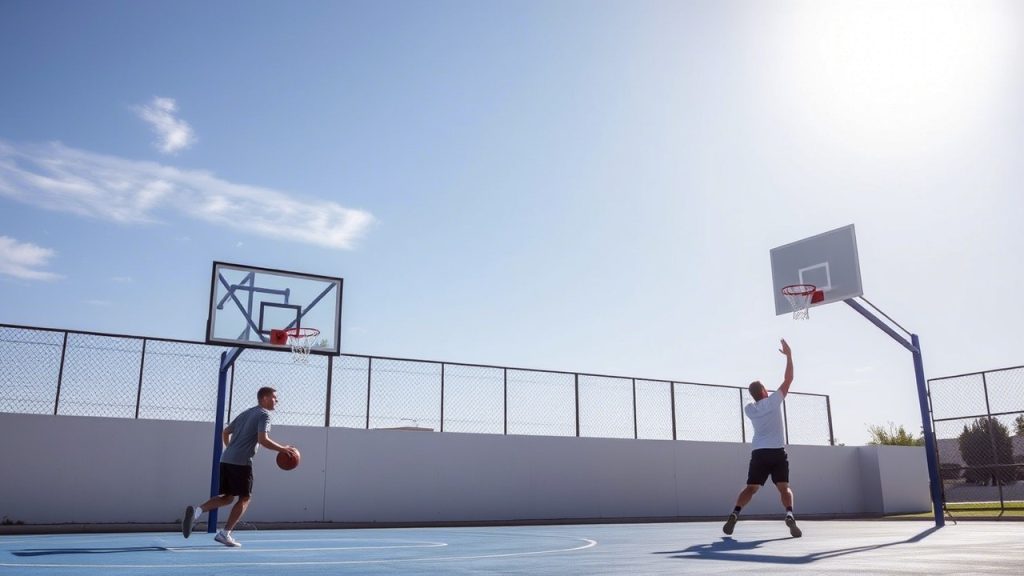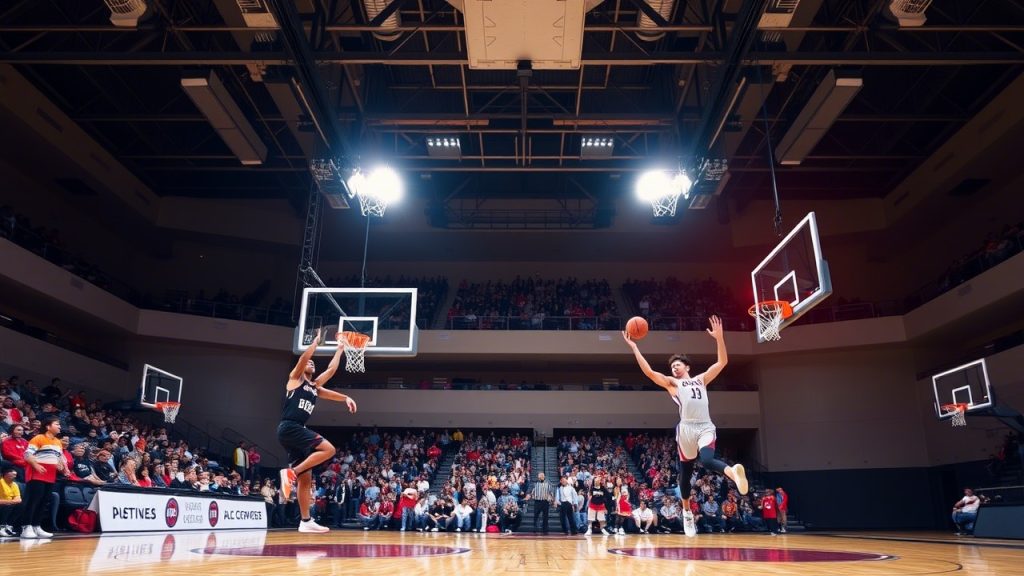Navigating technical terrain whether it’s rocky trails, steep inclines, or muddy paths demands a saddle that offers stability, comfort, and control for both rider and horse. A well-designed saddle can make the difference between a confident ride and a challenging struggle, allowing you to tackle demanding landscapes with ease. Whether you’re an endurance rider, trail enthusiast, or eventer, the right saddle can enhance your ability to master technical terrain.
We’ve curated the 17 best saddles to master technical terrain with ease, focusing on durability, rider security, and horse comfort. These saddles span Western, English, and treeless designs, catering to various disciplines and budgets. We’ll also provide a 30-day plan to optimize your saddle’s benefits and include 9 frequently asked questions to address common concerns. Let’s saddle up and explore the best options for conquering technical terrain!
Why a Saddle Matters for Technical Terrain
Technical terrain presents unique challenges, including uneven footing, steep slopes, and unpredictable surfaces. A saddle designed for these conditions supports both rider and horse by:
- Enhancing Rider Stability: Deep seats, padded surfaces, or high cantles keep you secure during sudden movements or steep descents.
- Promoting Horse Comfort: Flexible trees or treeless designs allow free movement, reducing strain on the horse’s back.
- Ensuring Durability: Rugged materials withstand harsh conditions like mud, rocks, or water.
- Facilitating Control: Close-contact designs or grippy leather enable precise aids, crucial for navigating obstacles.
- Reducing Fatigue: Ergonomic seats and shock-absorbing features make long rides more comfortable.
By choosing one of the 17 best saddles to master technical terrain with ease, you can ride confidently over any landscape. Let’s dive into our top picks.
How We Selected the Best Saddles
We evaluated saddles based on the following criteria:
- Stability Features: Deep seats, high cantles, or knee/thigh blocks for rider security on uneven terrain.
- Horse Comfort: Flexible trees, adjustable gullets, or treeless designs to support natural movement.
- Durability: High-quality leather or synthetic materials resistant to wear from mud, water, or rocks.
- Discipline Suitability: Saddles for trail, endurance, or eventing, optimized for technical terrain.
- Control and Contact: Designs that enhance rider aids for precise navigation.
- User Reviews: Feedback from riders on performance in challenging landscapes.
- Price Range: Options from budget-friendly to premium to suit all budgets.
These saddles are ideal for riders tackling technical terrain, from casual trail riders to competitive endurance athletes.
The 17 Best Saddles to Master Technical Terrain with Ease
1. Tucker High Plains Trail Saddle
- Price: $1,800-$2,200
- Discipline: Trail (Western)
- Best For: Trail riders
- Why It’s Great: Features a Gel-Cush seat and ErgoBalance stirrups for rider comfort. The flexible tree and smooth leather ensure durability and horse mobility.
- Terrain Benefits: The deep seat and high cantle provide stability on steep inclines, while the flexible tree allows free movement.
2. Wintec Wide All-Purpose Saddle
- Price: $700-$1,000
- Discipline: All-purpose (English)
- Best For: Budget-conscious riders
- Why It’s Great: Offers a medium-deep seat, adjustable gullet, and CAIR cushion panels for shock absorption. The synthetic material is easy to clean and withstands harsh conditions.
- Terrain Benefits: The padded seat and adjustable fit stabilize the rider and horse on uneven ground.
3. Bob Marshall Deluxe Endurance Saddle
- Price: $1,600-$2,100
- Discipline: Endurance
- Best For: Endurance riders
- Why It’s Great: This treeless saddle conforms to the horse’s back, offering flexibility and close contact. Its lightweight design reduces strain on long rides.
- Terrain Benefits: The treeless design and padded seat ensure stability and freedom of movement on rocky or muddy trails.
4. Circle Y Omaha Flex2 Trail Saddle
- Price: $1,900-$2,300
- Discipline: Trail (Western)
- Best For: Long-distance trail riders
- Why It’s Great: The Flex2 tree supports horse movement, and the padded seat with pre-turned fenders enhances rider comfort. The smooth leather is durable and easy to maintain.
- Terrain Benefits: The deep seat and flexible tree provide security and mobility on technical terrain.
5. Ansur Excel Treeless Saddle
- Price: $3,200-$4,000
- Discipline: All-purpose
- Best For: Multi-discipline riders
- Why It’s Great: The treeless design molds to the horse’s back, offering versatility for trail, endurance, or eventing. The padded seat ensures rider comfort.
- Terrain Benefits: The flexible design and close contact enhance control and stability on uneven surfaces.
6. Tex Tan Hereford Flex Trail Saddle
- Price: $1,600-$2,000
- Discipline: Trail (Western)
- Best For: Casual trail riders
- Why It’s Great: The flex tree reduces pressure points, and the padded seat ensures comfort. Its affordable price and rugged leather suit challenging conditions.
- Terrain Benefits: The deep seat and flexible tree stabilize the rider while allowing horse mobility on rocky paths.
7. Bates Caprilli Event Saddle
- Price: $2,000-$2,500
- Discipline: Eventing
- Best For: Eventing riders
- Why It’s Great: Features the Easy-Change Gullet System and CAIR panels for a custom fit. The medium-deep seat and forward flaps support cross-country performance.
- Terrain Benefits: The adjustable fit and shock-absorbing panels ensure stability on steep or uneven terrain.
8. Cashel Trail Saddle
- Price: $1,800-$2,200
- Discipline: Trail (Western)
- Best For: Trail enthusiasts
- Why It’s Great: Built on the Axis saddletree with curved bars for even pressure distribution. The lightweight 24.5-pound design and padded seat enhance comfort.
- Terrain Benefits: The deep seat and curved bars provide security and horse comfort on technical trails.
9. Collegiate ComFiTec Mono Event Saddle
- Price: $1,200-$1,500
- Discipline: Eventing
- Best For: Budget-conscious eventers
- Why It’s Great: The monoflap design and adjustable gullet offer close contact and a custom fit. The synthetic leather is durable and easy to clean.
- Terrain Benefits: The monoflap and medium-deep seat enhance rider control on cross-country courses.
10. Stubben Siegfried VSS Saddle
- Price: $2,800-$3,300
- Discipline: All-purpose (English)
- Best For: Multi-discipline riders
- Why It’s Great: The medium-deep seat and biomex technology reduce rider fatigue. The wide tree options and durable leather suit varied terrains.
- Terrain Benefits: The deep seat and flexible tree provide stability and horse mobility on uneven ground.
11. Passier Cross Country Saddle
- Price: $3,500-$4,000
- Discipline: Eventing
- Best For: Cross-country riders
- Why It’s Great: Features a medium-deep seat, forward flaps, and adjustable panels for a secure fit. The soft leather ensures durability and grip.
- Terrain Benefits: The forward flaps and close-contact design enhance control on steep or slippery terrain.
12. Tucker Plantation Saddle
- Price: $1,800-$2,200
- Discipline: Trail/Plantation (Western)
- Best For: Gaited horse riders
- Why It’s Great: The flexible tree and Gel-Cush seat support gaited horse movement and rider comfort. The durable leather withstands harsh conditions.
- Terrain Benefits: The deep seat and flexible tree ensure stability and smooth gaits on technical trails.
13. Freeform Classic Endurance Saddle
- Price: $2,500-$3,000
- Discipline: Endurance
- Best For: Endurance riders
- Why It’s Great: This treeless saddle offers a lightweight design and adjustable panels for a custom fit. The padded seat enhances rider comfort.
- Terrain Benefits: The treeless design allows unrestricted movement, ideal for navigating rocky or uneven paths.
14. Circle Y Just-B-Natural Treeless Saddle
- Price: $2,000-$2,500
- Discipline: Trail (Western)
- Best For: Trail riders
- Why It’s Great: The treeless design conforms to the horse’s back, and the padded seat ensures rider comfort. The rugged leather suits harsh conditions.
- Terrain Benefits: The flexible design and deep seat provide stability and horse mobility on technical terrain.
15. Kent and Masters Low Profile All-Purpose Saddle
- Price: $1,500-$2,000
- Discipline: All-purpose (English)
- Best For: Trail and eventing riders
- Why It’s Great: Features an adjustable gullet and flocked panels for a custom fit. The medium-deep seat and durable leather support varied activities.
- Terrain Benefits: The adjustable fit and padded seat stabilize the rider on uneven or steep terrain.
16. Ortho-Flex Express Lite Trail Saddle
- Price: $2,200-$2,800
- Discipline: Trail (Western)
- Best For: Long-distance trail riders
- Why It’s Great: The patented flex panels reduce pressure points, and the padded seat ensures comfort. The lightweight design suits extended rides.
- Terrain Benefits: The flex panels and deep seat provide stability and horse comfort on rocky or muddy trails.
17. Albion K2 Trail Saddle
- Price: $2,800-$3,400
- Discipline: Trail (English)
- Best For: Trail enthusiasts
- Why It’s Great: The medium-deep seat and adjustable tree offer a custom fit. The soft leather and padded flaps ensure durability and comfort.
- Terrain Benefits: The deep seat and adjustable fit enhance rider security on technical terrain.
How to Master Technical Terrain in 30 Days with Your New Saddle
A saddle designed for technical terrain is a game-changer, but consistent practice is key to mastering challenging landscapes. Follow this 30-day plan to optimize your saddle’s benefits and build confidence:
1st Week : Establish Comfort and Fit
- Day 1-2: Consult a saddle fitter to ensure the saddle fits your horse perfectly, checking for even contact and clearance over the withers.
- Day 3-5: Ride on flat trails for 30–60 minutes, focusing on your position in the saddle’s deep seat and maintaining balance.
- Day 6-7: Introduce gentle inclines, practicing steady leg aids to test the saddle’s stability.
2nd Week: Build Control and Stability
- Day 8-10: Ride on moderately technical trails (e.g., light rocks or shallow streams) for 1–2 hours, using the saddle’s grip to maintain a centered seat.
- Day 11-13: Practice transitions (walk-trot, trot-canter) on uneven ground to improve rhythm and control.
- Day 14: Take a lesson with a trainer to get feedback on your position and saddle fit, ensuring optimal stability.
3rd wee: Tackle Challenging Terrain
- Day 15-18: Ride on steeper or rockier trails for 2–3 hours, focusing on using your saddle’s deep seat to stay secure during descents or climbs.
- Day 19-21: Practice navigating obstacles (e.g., logs, mud) to refine your aids and horse’s responsiveness.
- Day 22: Record your ride to analyze your position and horse’s movement, adjusting for better balance on technical terrain.
4th Week: Master and Refine
- Day 23-26: Plan 3–4-hour rides on highly technical terrain (e.g., steep hills, rocky paths), using your saddle’s features for precise control.
- Day 27-29: Incorporate varied paces and obstacles to simulate real-world challenges, ensuring confidence and stability.
- Day 30: Complete a long trail ride or mock endurance event to showcase your ability to master technical terrain with ease.
This plan leverages your saddle’s stability and comfort features to build the skills and confidence needed for technical terrain.
Tips for Choosing the Right Saddle for Technical Terrain
- Prioritize Deep Seats: Deep seats or high cantles enhance rider security on steep or uneven ground.
- Ensure Horse Fit: A saddle that fits your horse prevents discomfort and supports free movement on challenging terrain.
- Choose Durable Materials: Rugged leather or synthetic materials withstand mud, water, and rocks.
- Look for Grip Features: Non-slip leather or thigh blocks improve control during sudden movements.
- Test on Terrain: If possible, try the saddle on a short trail ride to assess stability and comfort.
Additional Considerations for Mastering Technical Terrain
Beyond choosing the right saddle, consider these strategies to enhance your performance:
- Rider Fitness: Strengthen your core and legs through exercises like squats or yoga to maintain balance on uneven terrain.
- Horse Training: Work with a trainer to improve your horse’s confidence and responsiveness on technical trails.
- Saddle Maintenance: Clean and condition the saddle regularly to ensure durability and grip in harsh conditions.
- Use Proper Gear: Moisture-wicking saddle pads and grippy reins complement your saddle’s features.
- Plan Routes: Study trail maps to prepare for obstacles, ensuring you and your horse are ready for challenges.
Frequently Asked Questions
1. How does a saddle help master technical terrain?
A saddle helps by providing a deep seat for rider stability, a flexible design for horse comfort, and durable materials to withstand harsh conditions, enhancing control and confidence.
2. Can I master technical terrain in 30 days with a new saddle?
Yes! A well-fitted saddle and a structured practice plan can significantly improve your ability to navigate challenging landscapes within 30 days.
3. Are Western saddles better than English saddles for technical terrain?
Western saddles offer deeper seats and higher cantles for stability, ideal for trails. English saddles are lighter with close-contact designs, suited for eventing or endurance. Both work well if designed for terrain.
4. How do I know if a saddle fits my horse for technical terrain?
A saddle fits if it sits level, clears the withers, and allows free shoulder movement. Even sweat patterns after riding indicate proper fit. Consult a saddle fitter for accuracy.
5. Are treeless saddles effective for technical terrain?
Treeless saddles provide flexibility and close contact, allowing unrestricted horse movement and rider stability, making them excellent for technical trails or endurance.
6. What’s the best saddle for a budget-conscious rider on technical terrain?
The Wintec Wide All-Purpose Saddle is ideal due to its affordable price, adjustable fit, and durable synthetic material, supporting stability on challenging terrain.
7. How do I maintain my saddle for harsh trail conditions?
Clean it with saddle soap after rides, condition leather to prevent cracking, and store it in a dry, cool place. Check for wear from mud or rocks that could affect fit.
8. Can a poorly fitted saddle hinder performance on technical terrain?
Yes, a poorly fitted saddle can cause discomfort, restrict movement, or destabilize the rider, making it harder to navigate obstacles. Ensure a proper fit for both horse and rider.
9. Why is a deep seat important for technical terrain?
A deep seat anchors the rider, providing stability during steep climbs, descents, or sudden movements, ensuring control and confidence on challenging landscapes.
Conclusion
Mastering technical terrain is an exhilarating challenge that becomes achievable with the right saddle. The 17 best saddles to master technical terrain with ease from the budget-friendly Wintec Wide to the premium Ansur Excel offer deep seats, flexible designs, and durable materials to enhance your performance on rocky trails, steep hills, or muddy paths. Whether you’re a trail rider, endurance competitor, or eventer, these saddles provide the stability and control needed to ride confidently.
To conquer technical terrain in 30 days, choose a saddle from our list, follow our 30-day plan, and consult a saddle fitter to ensure a perfect fit. Pair your saddle with proper training, fitness, and maintenance, and you’ll be navigating any landscape with ease. Saddle up and embrace the adventure!





